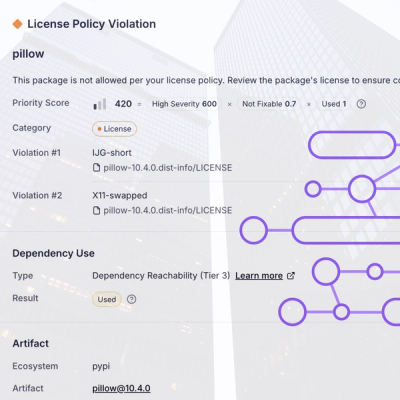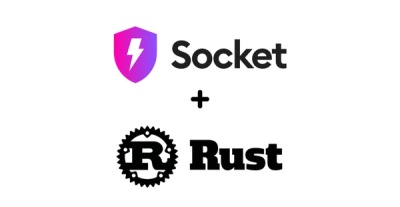
Research
/Security News
Critical Vulnerability in NestJS Devtools: Localhost RCE via Sandbox Escape
A flawed sandbox in @nestjs/devtools-integration lets attackers run code on your machine via CSRF, leading to full Remote Code Execution (RCE).
github.com/erdos-graph-framework/erdos

Erdos is a very light, modular and super easy to use modern Graph theoretic algorithms framework for Java. It
contains graph algorithms that you can apply swiftly with one line of code and was primarily developed to back a worker
manager tasks for various Java projects including one in Android.
Erdos was born because other frameworks in Java were very hard to get started with or just plain heavy (overhead wise) or just too opinionated. Erdos let the developer design it's own graph engines to optimise the runtime and comes with all of the graph algorithms you can expect.
Option 1: Jitpack
Add Jitpack in your root build.gradle at the end of repositories:
allprojects {
repositories {
...
maven { url "https://jitpack.io" }
}
}
Add to your dependencies:
dependencies {
compile 'com.github.Erdos-Graph-Framework:Erdos:v1.0'
// or the following for the current master snapshot
// compile 'com.github.Erdos-Graph-Framework:Erdos:master-SNAPSHOT'
}
Option 2: Simply fork or download the project, you can also download and create .jar file yourself, with
git clone https://github.com/Erdos-Graph-Framework/Erdos.git erdos
cd erdos
./gradlew build
ls -l build/libs
Option 3: grab the latest released jar
https://github.com/Erdos-Graph-Framework/Erdos/releases
Java 7Erdos is a framework to easily help you design graph algorithms with the correct abstractions and utilities. The builtin algorithms are:
AbstractGraphEngine.SimpleDirectedGraph graph_triangle = new SimpleDirectedGraph();
Vertex v0 = new Vertex();
Vertex v1 = new Vertex();
Vertex v2 = new Vertex("tag_v2");
graph_triangle.addVertex(v0);
graph_triangle.addVertex(v1);
graph_triangle.addVertex(v2);
Edge e_0 = graph_triangle.addEdge(v0, v1);
graph_triangle.addEdge(v1, v2);
graph_triangle.addEdge(v2, v3);
graph_triangle.print();
// iterate the graph vertices directly
for (IVertex vertex : graph_triangle) {
System.out.println(vertex.toString());
}
// iterate the edges of the graph
for (Edge edge : graph_triangle.edges()) {
System.out.println(edge.toString());
}
// removing a vertex in any of the following ways will remove it's connected edges as well,
// also removing any edge in similar fashion will update the graph :)
graph_triangle.removeVertex(v0);
graph_triangle.vertices().remove(v1);
graph_triangle.vertices().iterator().remove();
you can define your graph in terms of self loops, multi edges (per vertex) and a custom implementation of a graph engine.
boolean allow_self_loops = true;
boolean allow_multi_edges = true;
UndirectedGraph graph_undirected = Erdos.newUndirectedGraphWithEngine(new AdjIncidenceGraphEngine(),
allow_self_loops, allow_multi_edges);
DirectedGraph graph = Erdos.newGraphWithEngine(new AdjIncidenceGraphEngine(),
Edge.EDGE_DIRECTION.DIRECTED,
allow_self_loops, allow_multi_edges);
every algorithm extends AbstractGraphAlgorithm<T, E extends IGraph>, which is generically
typed E for input graph and T for output and must implement
T applyAlgorithm() methodfor example, the Bellman-Ford algorithm for single source shortest path,
followed by the Floyd-Warshall algorithm for all pairs shortest paths.
private void BellmanFord()
{
SimpleDirectedGraph graph = new SimpleDirectedGraph();
Vertex s = new Vertex("s");
Vertex t = new Vertex("t");
Vertex x = new Vertex("x");
Vertex y = new Vertex("y");
Vertex z = new Vertex("z");
graph.addVertex(s);
graph.addVertex(t);
graph.addVertex(x);
graph.addVertex(y);
graph.addVertex(z);
graph.addEdge(s, t, 6);
graph.addEdge(t, x, 5);
graph.addEdge(x, t, -2);
graph.addEdge(s, y, 7);
graph.addEdge(y, z, 9);
graph.addEdge(t, y, 8);
graph.addEdge(z, x, 7);
graph.addEdge(t, z, -4);
graph.addEdge(y, x, -3);
graph.addEdge(z, s, 2);
graph.setTag("graph");
graph.print();
// apply the Bellman-Ford algorithm
ShortestPathsTree res = new BellmanFordShortestPath(graph).setStartVertex(s).applyAlgorithm();
// print it
res.print();
// apply the Floyd-Warshall algorithm
AllPairsShortPathResult floyd_result = new FloydWarshall(graph).applyAlgorithm();
// print the shortest paths tree of the vertex
floyd_result.shortestPathsTreeOf(s).print();
// print the shortest path between two nodes
System.out.println(floyd_result.shortestPathBetween(s, z).toString());
}
this example shows the simplicity of the framework (hopefully ;)) where we apply 5 different algorithms sequentally
// perform a breadth first search
BFS.BreadthFirstTree breadthFirstTree = new BFS(graph, s).applyAlgorithm();
// perform a depth first search
DFS.DepthFirstForest depthFirstForest = new DFS(graph).applyAlgorithm();
// extract the strongly connected components of the graph
ArrayList<HashSet<IVertex>> hashSets = new SCC(graph).applyAlgorithm();
// perform a topological sort on the graph
LinkedList<IVertex> res_sort = new TopologicalSort(graph).applyAlgorithm();
// compute all pairs shortest paths using the Floyd-Warshall algorithm
AllPairsShortPathResult floyd_result = new FloydWarshall(graph).applyAlgorithm();
for major algorithms types, you can comfortably use the following algorithms factories
MinSpanTreeFactory - for Minimum Spanning Tree/Forest, for example:AbstractGraphAlgorithm<UndirectedGraph, IUndirectedGraph> alg = MinSpanTreeFactory.newMST(graph, MstAlgorithm.KRUSKAL, start_vertex);
AbstractGraphAlgorithm<UndirectedGraph, IUndirectedGraph> alg2 = MinSpanTreeFactory.newMST(graph, MstAlgorithm.PRIM, start_vertex);
SingleSourceShortPathFactory - for single source shortest path, for example:AbstractShortestPathAlgorithm alg = SingleSourceShortPathFactory.newSingleSourceShortPath(graph, SSSPAlgorithm.DIJKSTRA, start_vertex, end_vertex);
AllPairsShortPathFactory - for shortest paths between all pairs, for example:AbstractGraphAlgorithm<AllPairsShortPathResult, IDirectedGraph> alg2 = AllPairsShortPathFactory.newAllPairsShortPath(graph, APSPAlgorithm.Johnson);```
a bunch of helper utilities can be found in the package com.hendrix.erdos.utils
SVertexUtils.java - query vertex order information inside a graphSEdgeUtils.java - query edge order information inside a graphSMatrixUtils.java - compute the adjacency and incidence matrix of a graphSGraphUtils.java - get a sorted list of the weighted edges in a graphAndroid-Zorn - for constructing a worker manager based on topological sorting in a graph.contributions are most welcomed, please consult CONTRIBUTING.md
homage to the great hungarian mathmatician Paul Erdős who part of his research was rooted in combinatorial graph theory.
If you like it -> star or share it with others
MIT License
Copyright (c) 2017 Tomer Shalev and Erdos (https://github.com/HendrixString)
Permission is hereby granted, free of charge, to any person obtaining a copy
of this software and associated documentation files (the "Software"), to deal
in the Software without restriction, including without limitation the rights
to use, copy, modify, merge, publish, distribute, sublicense, and/or sell
copies of the Software, and to permit persons to whom the Software is
furnished to do so, subject to the following conditions:
The above copyright notice and this permission notice shall be included in all
copies or substantial portions of the Software.
THE SOFTWARE IS PROVIDED "AS IS", WITHOUT WARRANTY OF ANY KIND, EXPRESS OR
IMPLIED, INCLUDING BUT NOT LIMITED TO THE WARRANTIES OF MERCHANTABILITY,
FITNESS FOR A PARTICULAR PURPOSE AND NONINFRINGEMENT. IN NO EVENT SHALL THE
AUTHORS OR COPYRIGHT HOLDERS BE LIABLE FOR ANY CLAIM, DAMAGES OR OTHER
LIABILITY, WHETHER IN AN ACTION OF CONTRACT, TORT OR OTHERWISE, ARISING FROM,
OUT OF OR IN CONNECTION WITH THE SOFTWARE OR THE USE OR OTHER DEALINGS IN THE
SOFTWARE.
FAQs
Unknown package
Did you know?

Socket for GitHub automatically highlights issues in each pull request and monitors the health of all your open source dependencies. Discover the contents of your packages and block harmful activity before you install or update your dependencies.

Research
/Security News
A flawed sandbox in @nestjs/devtools-integration lets attackers run code on your machine via CSRF, leading to full Remote Code Execution (RCE).

Product
Customize license detection with Socket’s new license overlays: gain control, reduce noise, and handle edge cases with precision.

Product
Socket now supports Rust and Cargo, offering package search for all users and experimental SBOM generation for enterprise projects.